Related Research Articles

South Ribble is a non-metropolitan district and borough of Lancashire, England. Its council is based in Leyland. The population, at the 2011 Census, was 109,057. In May 2007, the council was officially declared "Excellent" by the Audit Commission, of the best five district councils in the country.
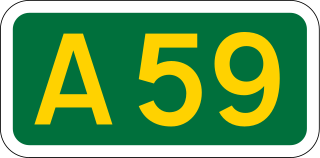
The A59 is a major road in England which is around 109 miles (175 km) long and runs from Wallasey, Merseyside to York, North Yorkshire. The alignment formed part of the Trunk Roads Act 1936, being then designated as the A59. It is a key route connecting Merseyside at the M53 motorway to Yorkshire, passing through three counties and connecting to various major motorways. The road is a combination of historical routes combined with contemporary roads and a mixture of dual and single carriageway. Sections of the A59 in Yorkshire closely follow the routes of Roman roads, some dating back to the Middle Ages as salt roads, whilst much of the A59 in Merseyside follows Victorian routes which are largely unchanged to the present day.

South Ribble is a constituency represented in the House of Commons of the UK Parliament since 2019 by Katherine Fletcher, a Conservative.

Longton is a village and civil parish in the west of the borough of South Ribble, Lancashire, England. It is about 4 miles to the south west of Preston. The population of the civil parish, which also includes the village of New Longton, was 5,500 at the 2001 Census increasing to 7,652 at the 2011 Census.
The West Lancashire Railway (WLR) ran northeast from Southport to Preston in northwest England.

Burnley Central railway station is a station in the town of Burnley, Lancashire and is on the East Lancashire Line. It is managed by Northern, which also provides its passenger service.
Preston was a rural district in Lancashire, England from 1894 to 1974. It surrounded Preston on the north, west and east sides.

Farington railway station served Farington, south of Preston in Lancashire, England.
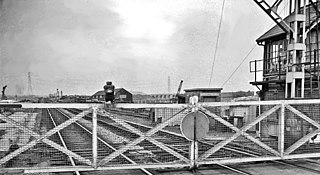
Beighton railway station is a former railway station near the village of Beighton on the border between Derbyshire and South Yorkshire, England.

Penwortham Cop Lane was a railway station on the West Lancashire Railway in England. It served the town of Penwortham in Lancashire. It was between Higher Penwortham and Lower Penwortham. It was opened by the Lancashire and Yorkshire Railway in 1911 as Cop Lane Halt. It was renamed to its later name on 30 March 1940 and was closed by British Rail in 1964.
Longton Bridge was a railway station on the West Lancashire Railway in England. It served the village of Longton.
There are 22 disused railway stations in the 75 miles (121 km) between Bristol Temple Meads and Exeter St Davids, 12 of which have structures that can still be seen from passing trains. Most were closed in the 1960s but four of them, especially around Weston-super-Mare, were replaced by stations on new sites. 13 stations remain open on the line today, but there have been proposals to reopen stations at Cullompton and Wellington.

New Longton is a village located 4 miles (6 km) south west of Preston, in the district of South Ribble, in the county of Lancashire, North West England. It is in the parish of Longton, which is the name of the older village located 2 miles (3 km) to the west of New Longton.

Hutton is a village and civil parish in Lancashire, England. It is located 3 miles (4.8 km) south west of Preston, in the South Ribble borough and parliamentary constituency. The population of the civil parish at the 2011 census was 2,277.
The Lancashire, Derbyshire and East Coast Railway (LD&ECR) was built to connect coalfields in Derbyshire and Nottinghamshire with Warrington and a new port on the Lincolnshire coast. It was a huge undertaking, and the company was unable to raise the money to build its line. With the financial help of the Great Eastern Railway it managed to open between Chesterfield and Lincoln with a branch towards Sheffield from 1896. Despite efforts to promote tourist travel, the passenger business was never buoyant, but collieries were connected to the line, at first and in succeeding years. The Great Eastern Railway, and other main line companies, transported coal to the southern counties, and the company's engines took coal to Immingham in great quantities. The company had a fleet of tank engines.
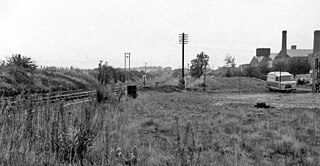
Boughton railway station served the village of Boughton in Nottinghamshire, England from 1897 to 1955 when it was closed. It has since been razed to the ground.
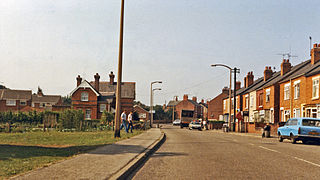
Creswell and Welbeck railway station used to serve the village of Creswell, in north eastern Derbyshire, England.
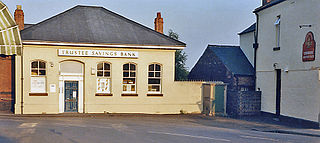
Clowne South railway station is a former railway station in Clowne, Derbyshire, England.

Howick Cross is a landmark and small hamlet in Penwortham, South Ribble, Lancashire, England. It is located just over 2 miles south west of the city of Preston. The hamlet is predominantly made up of a small community, a primary school, various farms and an electrical substation. The community had a population of 354 people in 2001.
References
- 1 2 New Longton On-Line, accessed 6 February 2007
- 1 2 "New Longton and Hutton". Disused Stations. 21 May 2017.
| Preceding station | Disused railways | Following station | ||
|---|---|---|---|---|
| Longton Bridge towards Southport | West Lancashire Railway | Penwortham Cop Lane towards Preston |
Coordinates: 53°43′35″N2°44′50″W / 53.7265°N 2.7472°W